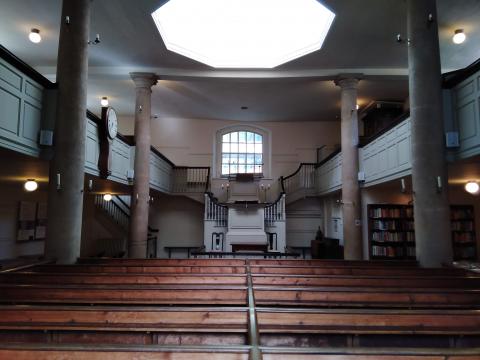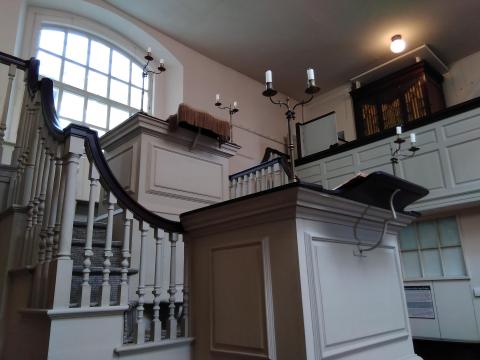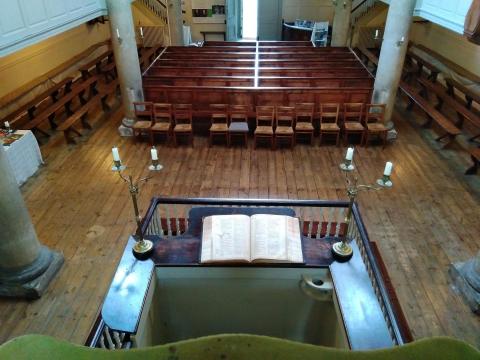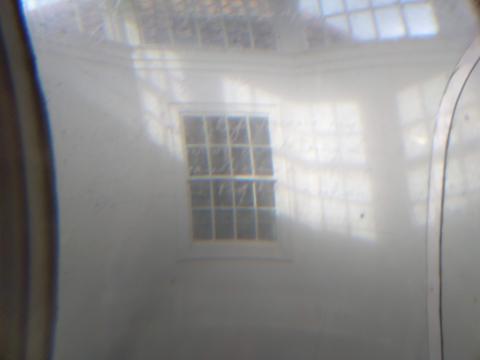Wesley's New Room, Bristol

Another one ticked off the list. John Wesley’s New Room at Bristol I visited this week. It calls itself the oldest Methodist building in the world, and possesses the original two-tier pulpit from which the great man preached. I felt more at ease here than in his chapel in Finsbury which boasts about its gay weddings and celebrates old apostates like Soper and Weatherhead. Because it is no longer a regular place of worship, there was little to make rise my hackles.

As well as being an elegant place wherein the gospel was soundly preached for decades, it was a centre of evangelistic endeavour, with circuit preachers residing in the rooms above, before setting off to preach in the open air. Now it is a museum to early Methodism, with a more modest collection of trinkets than that held by its London sister. It was here in 1788 that local merchants hired a mob to disrupt a sermon:
"... about the middle of the discourse, while there was on every side attention still as night, a vehement noise arose, none could tell why, and shot like lightning throughout the whole congregation…The terror and confusion were inexpressible. You might have imagined it was a city taken by storm…The people rushed on each other with utmost violence; the benches were broke in pieces, and nine-tenths of the congregation appeared to be struck with the same panic.”

Mr Wesley characteristically concluded:
“In about six minutes the storm ceased, almost as suddenly as it arose, and, all being calm, I went on without the least interruption."

Some eighteenth-century graffiti, above, has been found scratched on some internal glass, which has been attributed to a Cornish visiting preacher, Francis Woolf:
'On brittle glass I grave my Name
A follower of the bleeding Lamb
But thou canst show a nobler Art
And grave thy Name upon my heart.'
Alongside it are two other inscriptions:
'Prepare to meet thy God.'
(written by preacher Nicholas Manners of Wiltshire in 1769) and
"The Lord have mercy on thy soul.'
(by G. E. Ham in 1776, of Ireland.)
Graffiti is a form of art or communication currently associated with vandalism, crime and vulgarity. Georgian Methodists, it would seem, preferred to use it for God’s glory and the reader’s challenge. May the Lord indeed write His name on our hearts and bestow His mercy thereon.
- Log in to post comments


 Sunday Worship 10.45am & 6.00pm
Sunday Worship 10.45am & 6.00pm